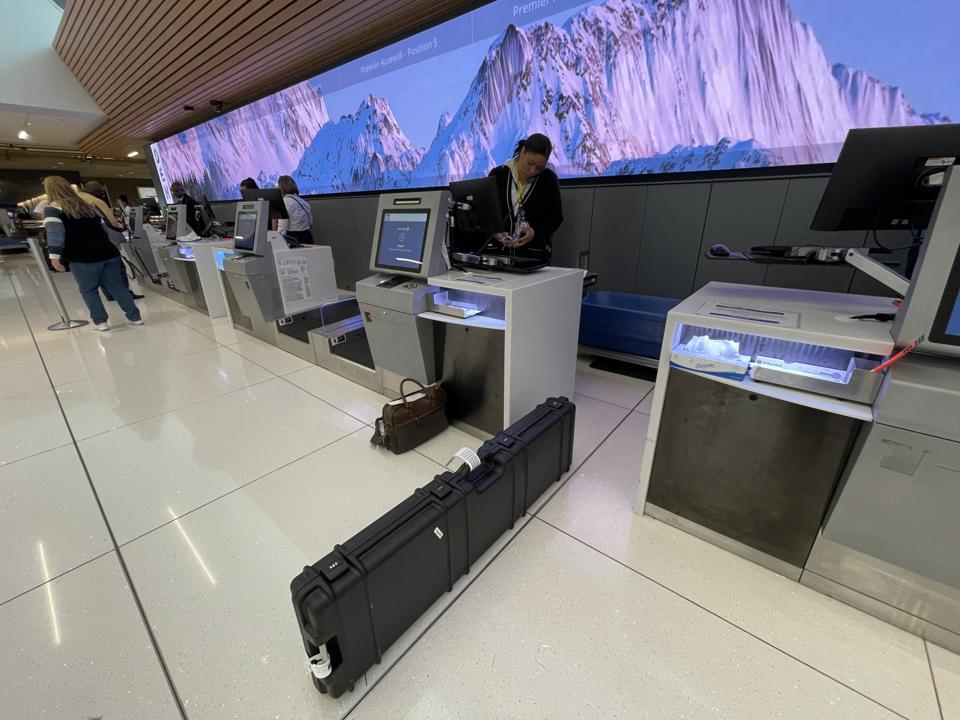The Trump Administration recently announced a review of TSA policies designed to simplify travel ahead of major US events like the FIFA World Cup, Olympics and America250 anniversary celebrations.
America’s 83 million gun owners are hoping that review will include a streamlined approach to air travel with firearms. For millions of gun owners who fly with firearms each year, the process is seen as unnecessarily burdensome while at the same time adding little to public safety.
With nearly a third of the adult population in the country owning at least one firearm, it’s not surprising that millions of gun owners want to travel with them for a wide variety of reasons ranging from recreational shooting and hunting to personal protection and competition.
The process of checking a firearm onto a commercial airline flight, however, is seen as mystifying by many gun owners because procedures lack consistency, often varying from airline to airline and from airport to airport. Too, many see the rules as targeting law-abiding citizens who pose no threat in the first place.
That is, gun owners point out that criminals, by definition, do not obey laws, so implementing more laws and regulations around traveling with firearms only impacts people who wouldn’t break the law in the first place; thus, doing little to change safety outcomes.
Under general TSA rules, a person flying with a firearm must declare the weapon at the check-in counter and the gun must be unloaded and secured in a locked hard case.
The approach seems reasonable and straightforward on the surface but frequently derails in the minutes following the declaration of a firearm. Case in point, some agents ask travelers with firearms to open their gun cases to demonstrate that their gun(s) are, in fact, unloaded. Other travelers standing near the check-in counter when a gun case is opened tend to recoil when seeing a person they don’t know standing with a gun a few feet away. In that moment, few passengers think the process is making them safer.
Another problem with requesting that a passenger confirm a firearm is unloaded is that many ticket agents can’t distinguish the difference in the first place. Relying on a passenger checking a firearm, then, to confirm that a gun is unloaded is a pointless security layer that doesn’t weed out bad actors who aren’t likely to be truthful about their gun’s loaded status. That is, if a traveler with guns had nefarious intent, they aren’t likely to tell the agent that the gun is loaded. Thus, for many traveling with firearms, this check-in procedure represents more folly than effective security measure.
Furthermore, a criminal wouldn’t declare a gun in the first place, say gun owners, so the entire TSA process isn’t grounded in security at all but rather creates a false perception of safety at the expense of law-abiding gun owners who are subjected to layers of TSA scrutiny.
Once your firearm is checked at the airline counter, you and your gun will be escorted to a TSA checkpoint by an airport baggage handler where they will determine that the case does, in fact, contain firearms…because, of course, you would declare that you have firearms if you didn’t.
A TSA agent then opens the case, inspects the guns yet again and searches inside the case for explosives and subsequently runs the case through an x-ray to confirm the obvious one more time. It’s not clear just how many terrorists have smuggled explosives inside a gun case after declaring that they were checking a firearm, but Vegas oddsmakers would likely place that chance at something near zero.
What’s more, a cased firearm resides in the hold of the aircraft like the rest of the checked luggage, so passengers have no access to guns while in flight anyway.
For travelers with guns, then, the process can seem like a chapter out of Joseph Heller’s Catch-22. It’s not clear whether the TSA officials who implemented the current rules on flying with guns simply didn’t possess basic firearm knowledge or whether they lacked a fundamental understanding of criminality. In either case, American gun owners have had enough and are looking for new Homeland Security Secretary Kristi Noem to bring overdue sanity to the process.
As the former governor of South Dakota, Noem—a well-known hunter and recreational shooter—annually hosted a pheasant hunt in that state where hundreds of business leaders from across the country traveled with firearms to partake in South Dakota’s celebrated hunting season. Little did they know at the time that she would one day be in a position to address the incoherent TSA rules around flying with firearms.
Rather than treating all airline passengers who check firearms as potential criminals, some propose that frequent gun flyers should be exempted from advanced TSA screening if they voluntarily submit to a background check like those required for TSA PreCheck or Global Entry. That is, if someone has never broken the law, why burden an already taxed airline and TSA system with more checks that statistically do nothing to advance public safety?
As TSA undergoes its policy and procedural review in the hopes of streamlining airport regulations, law-abiding American gun owners hope their travel concerns, too, will finally be addressed.

